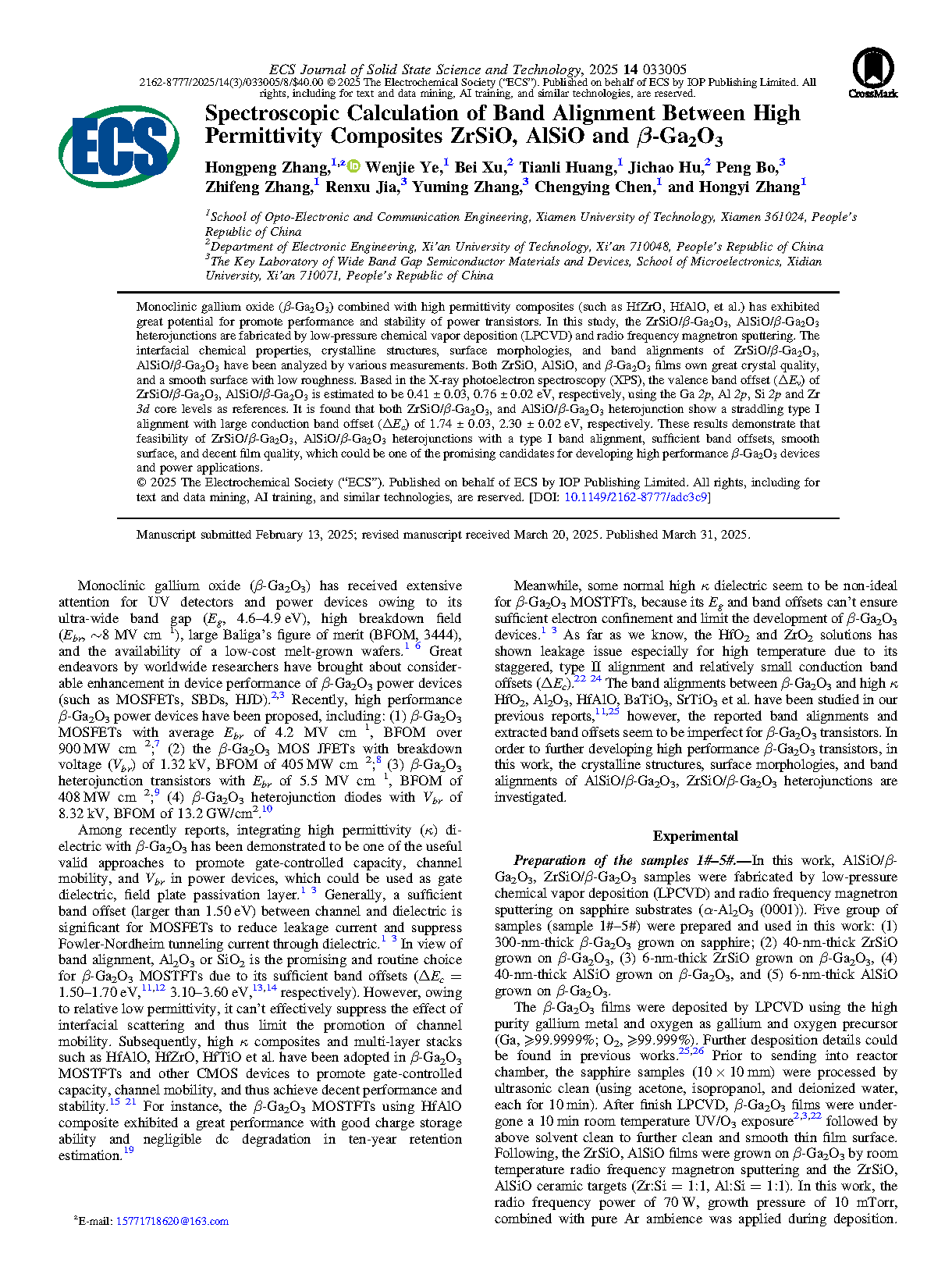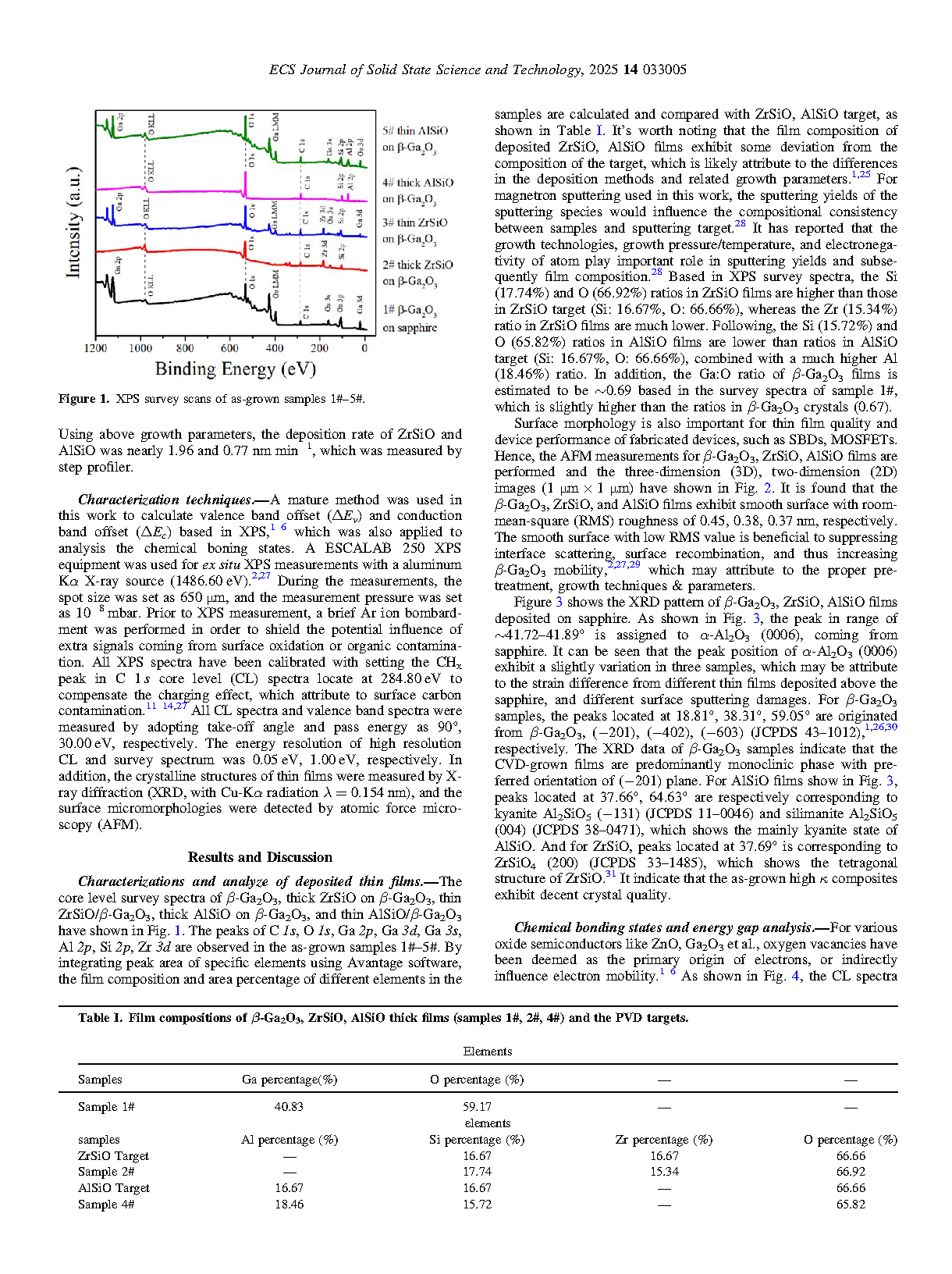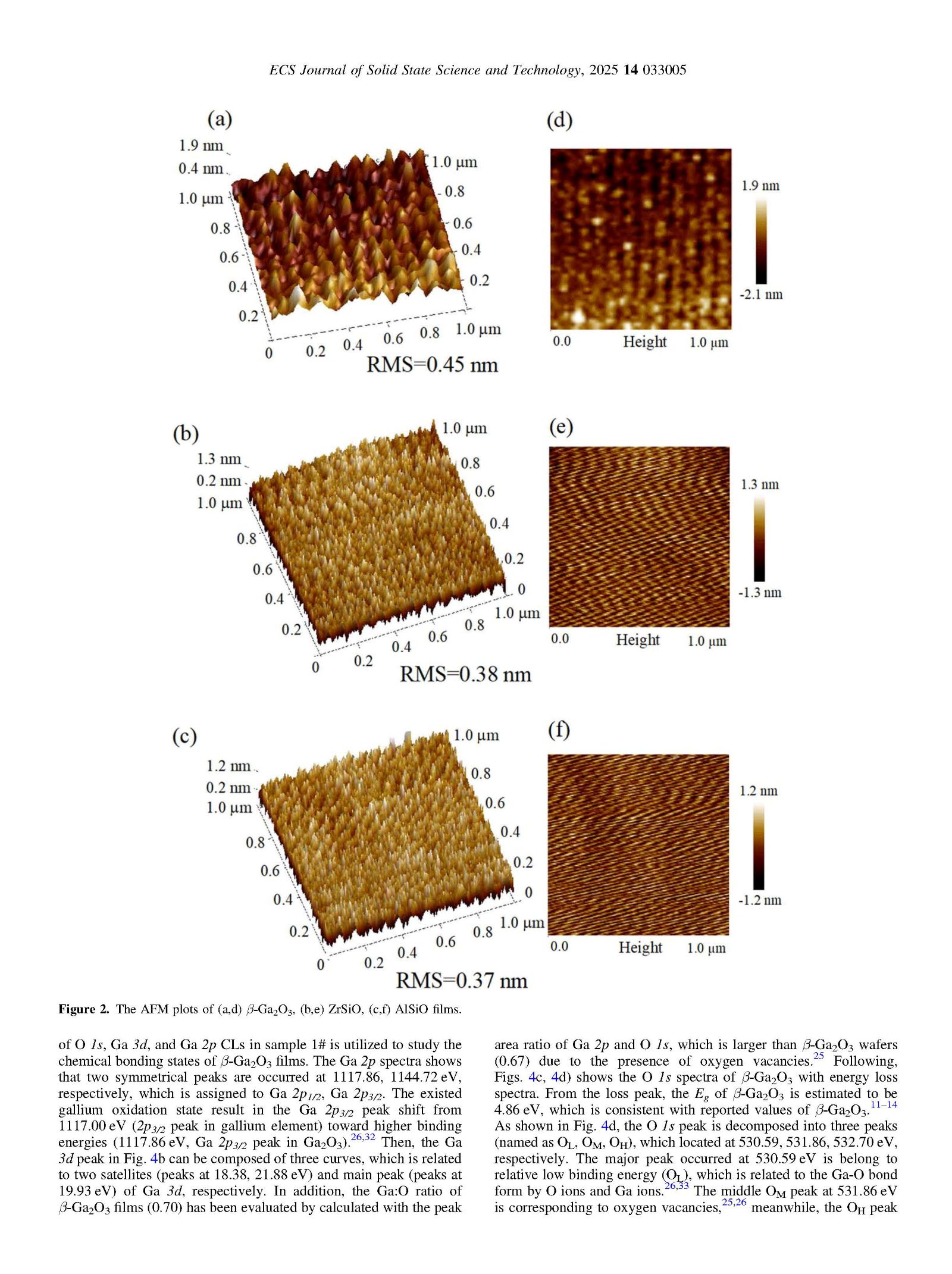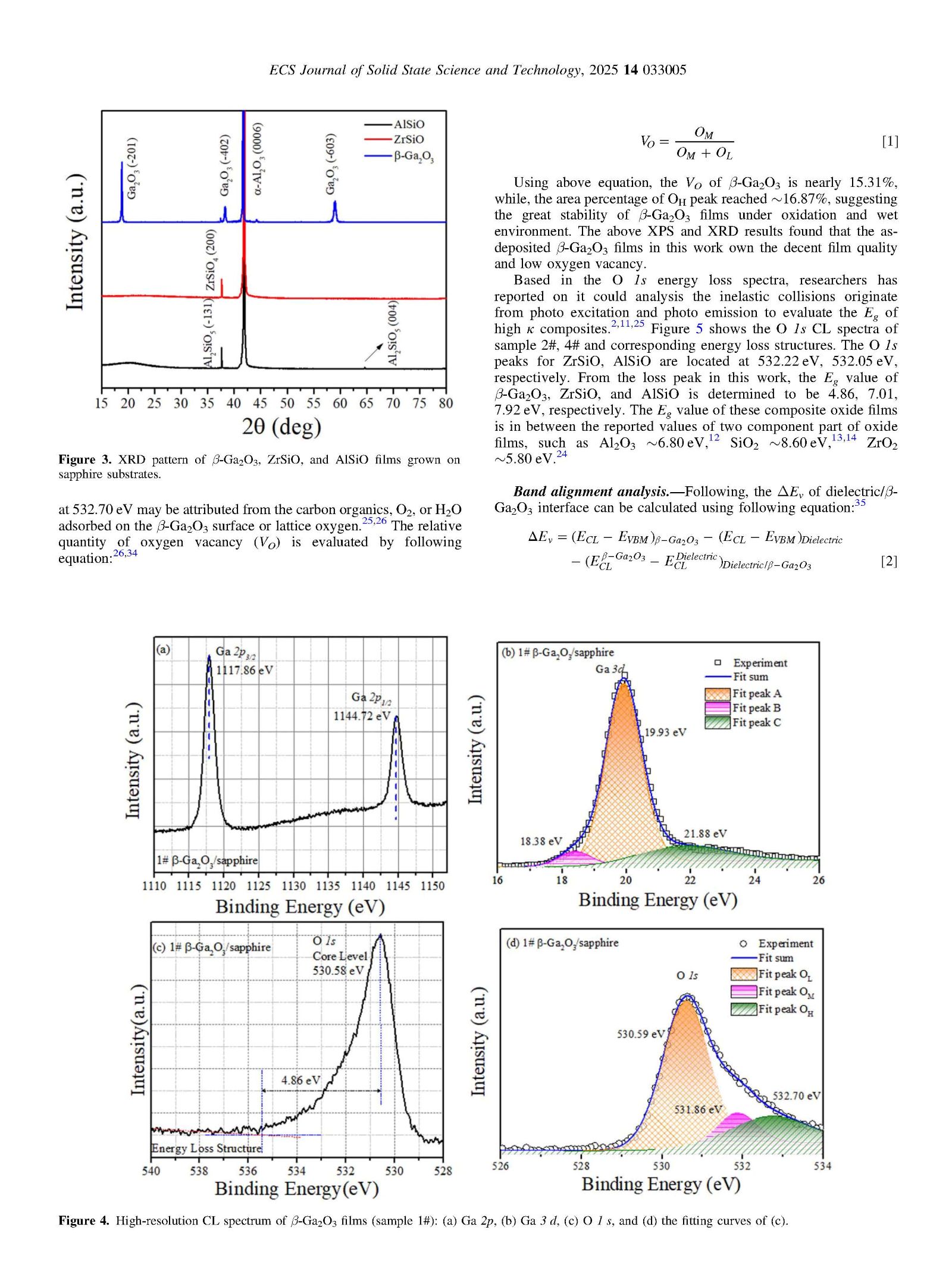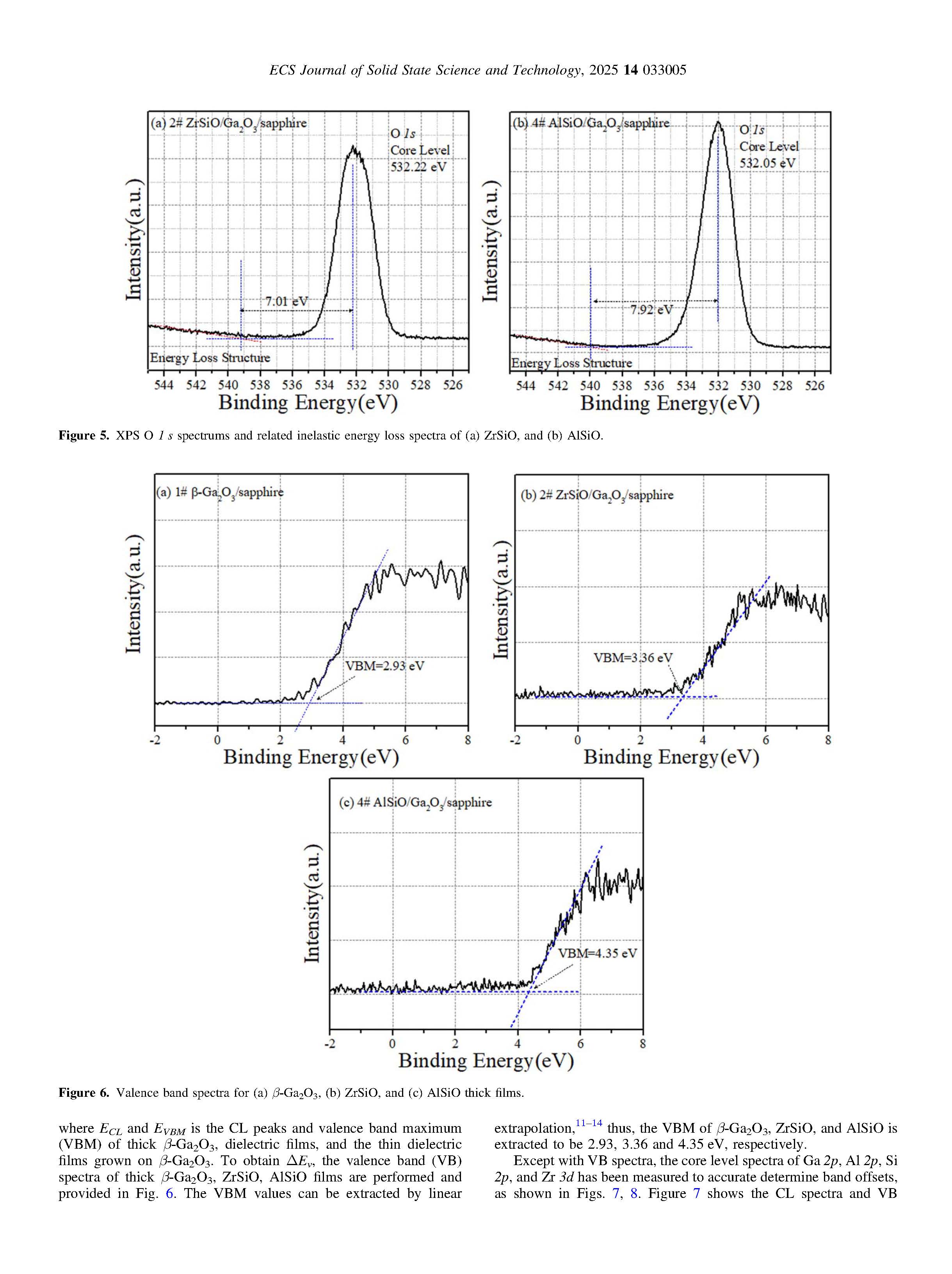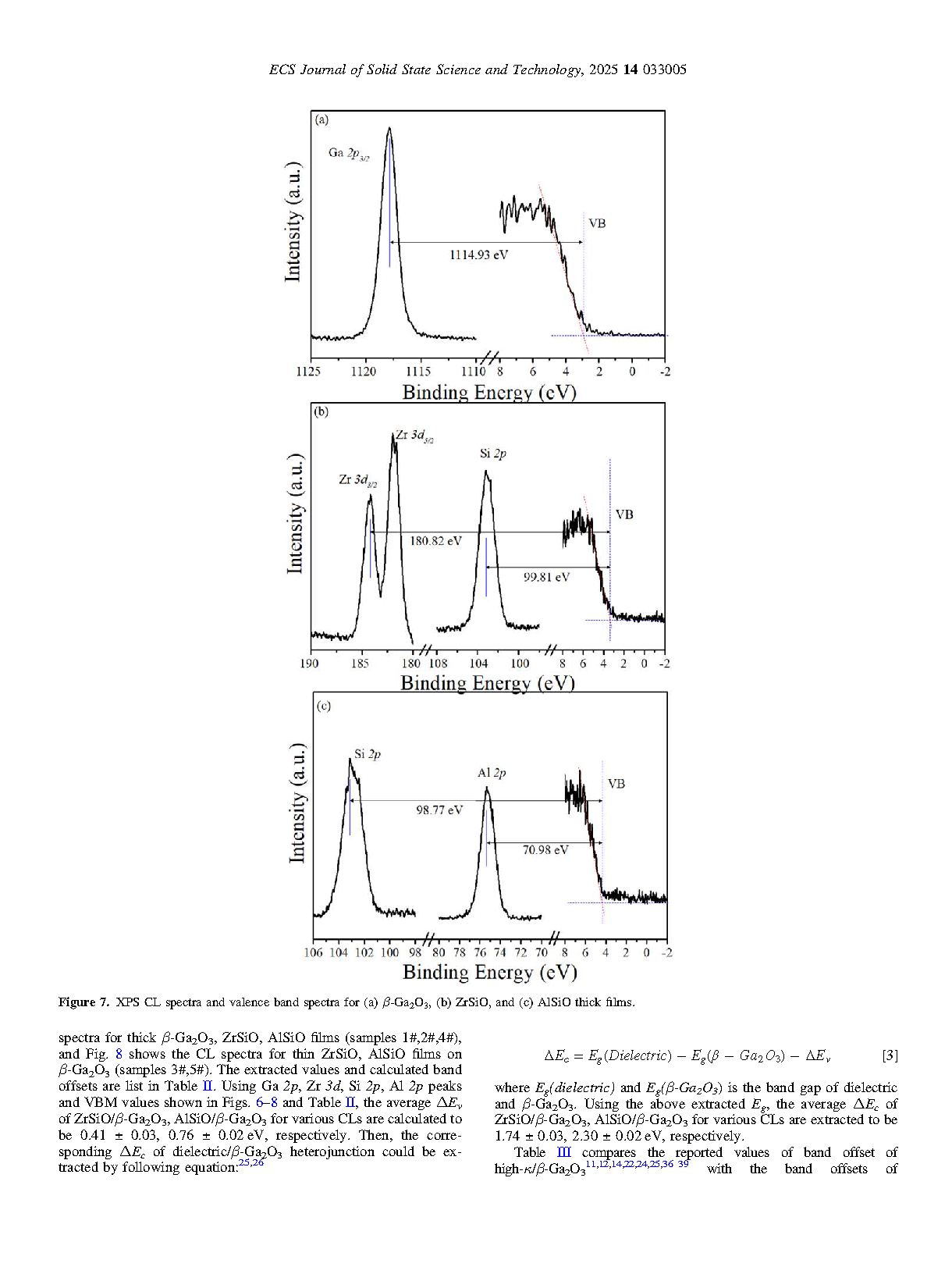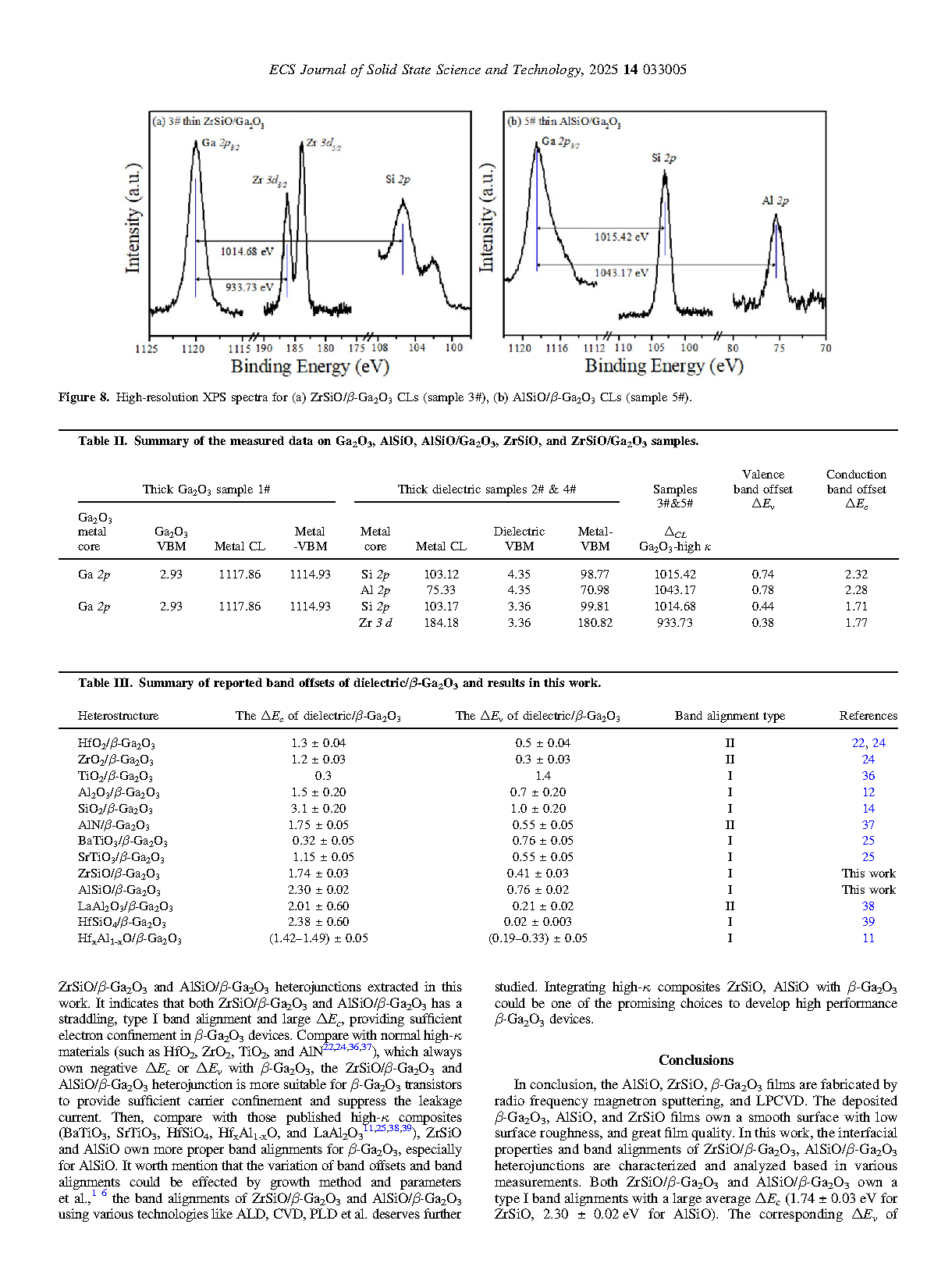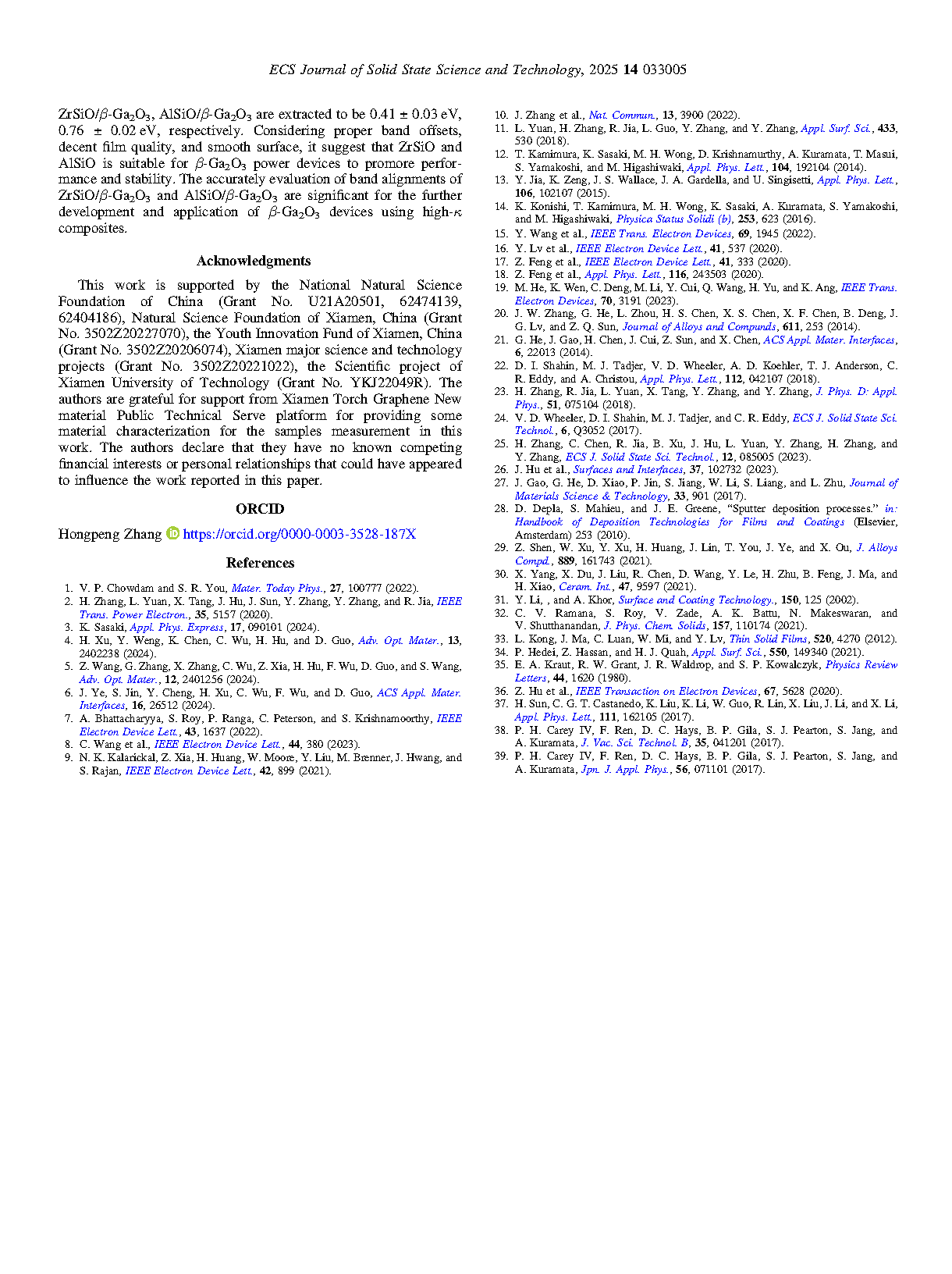

【Member Papers】Spectroscopic Calculation of Band Alignment Between High Permittivity Composites ZrSiO, AlSiO and β-Ga₂O₃
日期:2025-06-17阅读:355
Basic information
A research team by Prof. Chen Chengying and Teacher Zhang Hongpeng from Xiamen University of Technology published a paper titled “Spectroscopic Calculation of Band Alignment Between High Permittivity Composites ZrSiO, AlSiO and β-Ga2O3” in Journal: ECS Journal of Solid State Science and Technology.
Funding
This research was supported by the National Natural Science Foundation of China (NSFC) (Grant No. U21A20501, 62474139, 62404186) and the Science and Technology Plan Project of Xiamen City (No. 3502Z20227070). The project was funded by 3502Z20206074 and the Major Science and Technology Project of Xiamen City (No. 3502Z20221022).
Background
β-phase gallium oxide (β-Ga2O3) has become a promote candidate for the next generation of power devices and deep ultraviolet detectors due to its superior properties such as ultra-wide bandgap (4.9 eV) and high critical breakdown field strength (8 MV/cm), as well as the increasingly mature single crystal preparation and epitaxial growth technologies. Among them, the MOS structure is widely used in β-Ga2O3 power devices (such as transistors, MOS-Type diodes or device passivation layers) and photodetectors to improve the gate control performance and reliability of the devices. In order to fulfill the advantage of high breakdown field strength of β-Ga2O3, integrating MOS structures with β-Ga2O3 and high dielectric constant dielectric (high k dielectric) is regarded as one of the solutions for effectively regulating the gate and surface electric fields. For example, HfO2, HfSiO, HfAlO, and even higher k choice such as BaTiO3 and SrTiO3 have been successively reported to be used in β-Ga2O3 transistor and diodes to adjust the gate control and electric field, effectively enhance the device breakdown field strength, and have great application potential. Therefore, based on our previous studies (such as HfAlO/β-Ga2O3,BaTiO3/β-Ga2O3,SrTiO3/β-Ga2O3, etc.), our team explored the band structure of β-Ga2O3 in the high-K composite ZrSiO, AlSiO. Provide experimental inspiration and guidance for the development of high-performance β-Ga2O3 based electronic devices.
Main Content
This paper systematically studies the microstructure, film quality, band structure and interfacial characteristics of high-K composites ZrSiO and AlSiO films grown on β-Ga2O3 films. In this study, β-Ga2O3 films and ZrSiO, AlSiO films were prepared respectively by low-pressure chemical vapor deposition (LPCVD) technology and radio frequency magnetron sputtering (RF PVD) technology. Advanced characterization techniques, including X-ray photoelectron spectroscopy (XPS), atomic force microscopy (AFM), and X-ray diffraction (XRD), were used to clarify the surface morphology, crystal structure, atomic bonding, and band order of the prepared films. These results show that the β-Ga2O3 and ZrSiO, AlSiO films prepared based on the above process and appropriate growth parameters have good film quality and surface flatness (low RMS). Furthermore, through the analysis of characterization data, it can be known that both the heterojunctions ZrSiO/β-Ga2O3 and AlSiO/β-Ga2O3 form a nested I-type band structures. It also has extremely large conduction band offsets (1.74 ± 0.03 and 2.30 ± 0.02 eV respectively) and valence band offsets (0.41 ± 0.03 and 0.76 ± 0.02 eV respectively), which can effectively hinder carrier transportation and reduce the leakage current of the MOS structure.
This study explored the film quality, interface characteristics and band order of ZrSiO/β-Ga2O3 and AlSiO/β-Ga2O3 heterojunctions, providing experimental inspiration and theoretical guidance for the development of high-performance wide bandgap semiconductor devices.
Innovation
The heterojunctions ZrSiO/β-Ga2O3 and AlSiO/β-Ga2O3 were systematically studied for the first time by using X-ray photoelectron spectroscopy (XPS), atomic force microscopy (AFM) and X-ray diffraction (XRD).
Study the ZrSiO AlSiO, β-Ga2O3 crystal structure, surface morphology, illuminates the ZrSiO/β-Ga2O3 and AlSiO/β-Ga2O3 band structure and can take order.
The studies provides experimental inspiration and theoretical guidance for developing high performance β-Ga2O3 devices, combined with proposing two potential high k solution for β-Ga2O3 power devices.
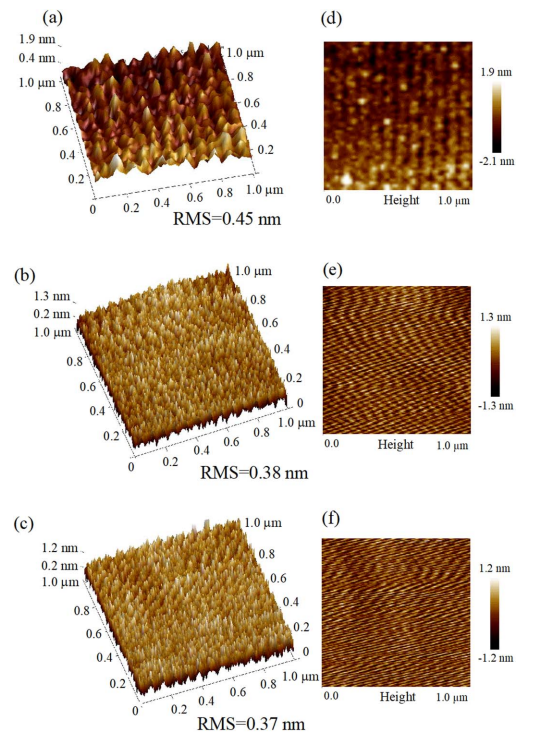
Fig.1 AFM plots of (a,d) β-Ga2O3, (b,e) ZrSiO, (c,f) AlSiO films
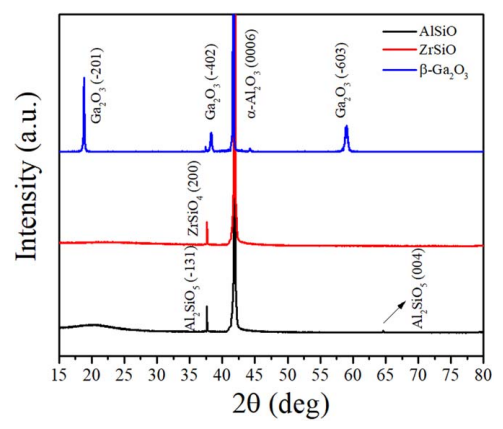
Fig.2 XRD plots of β-Ga2O3, ZrSiO, AlSiO films growth in c-sapphire.
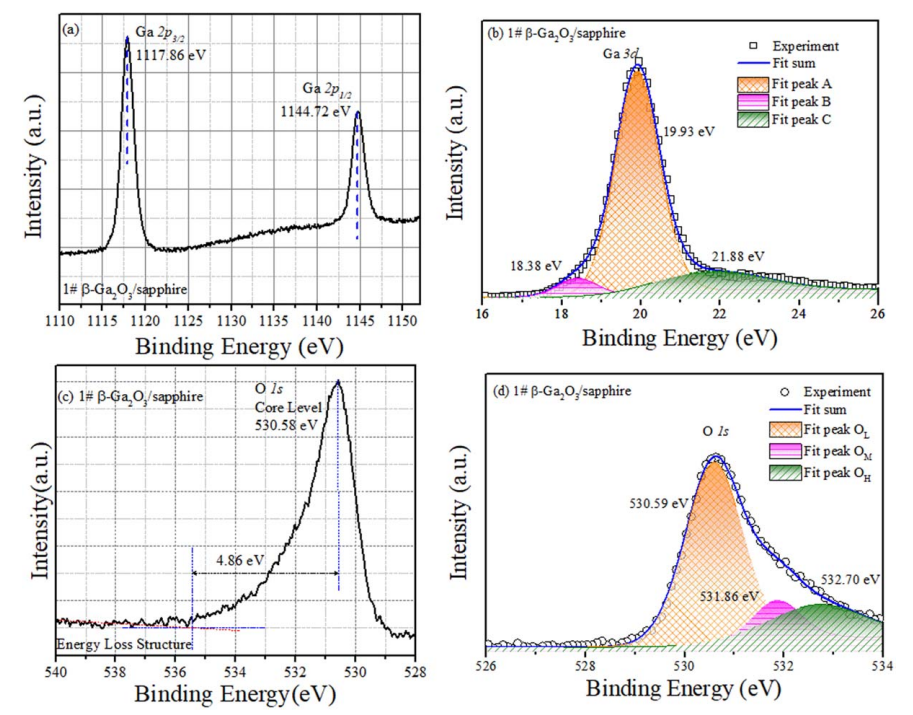
Figure 3. High-resolution CL spectrum of β-Ga2O3 films: (a) Ga 2p, (b) Ga 3d, (c) O 1s, and (d) the fitting curves of (c).
DOI:
doi.org/10.1149/2162-8777/adc3c9
